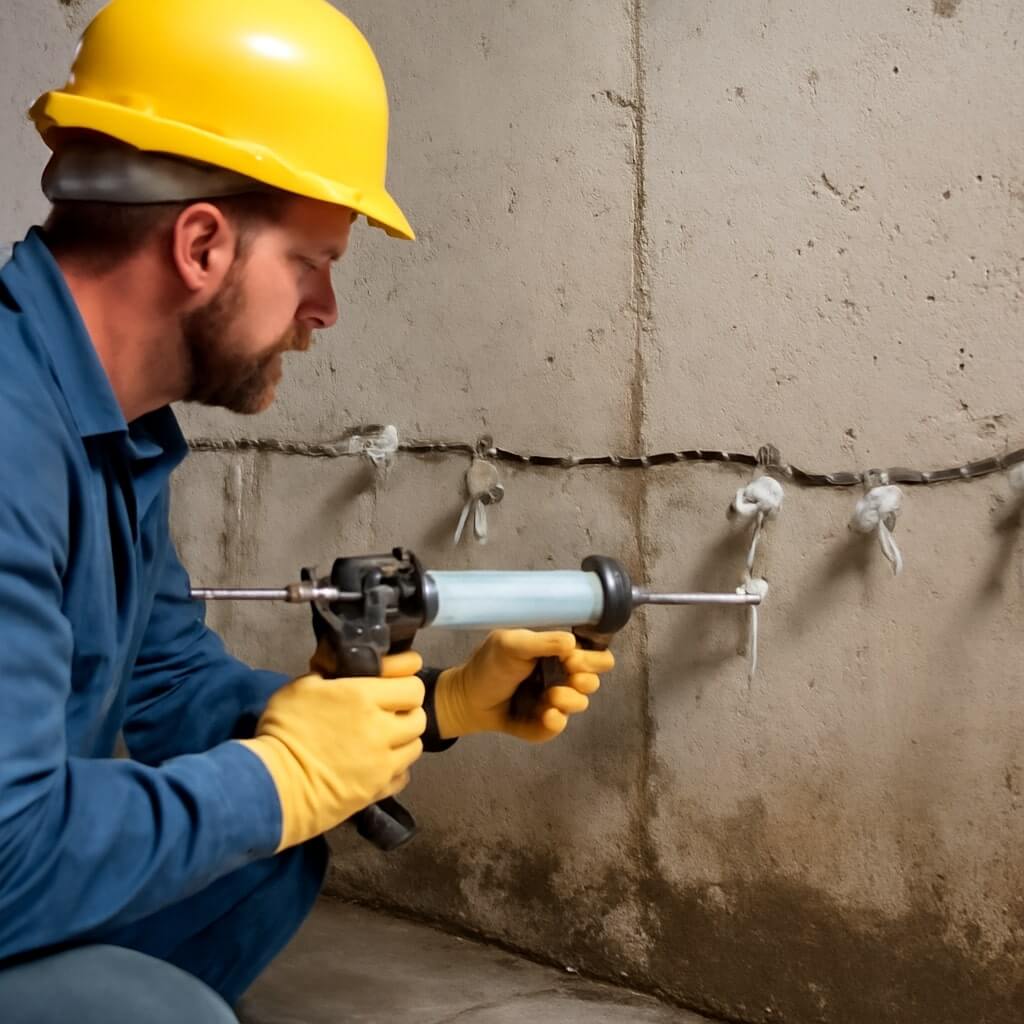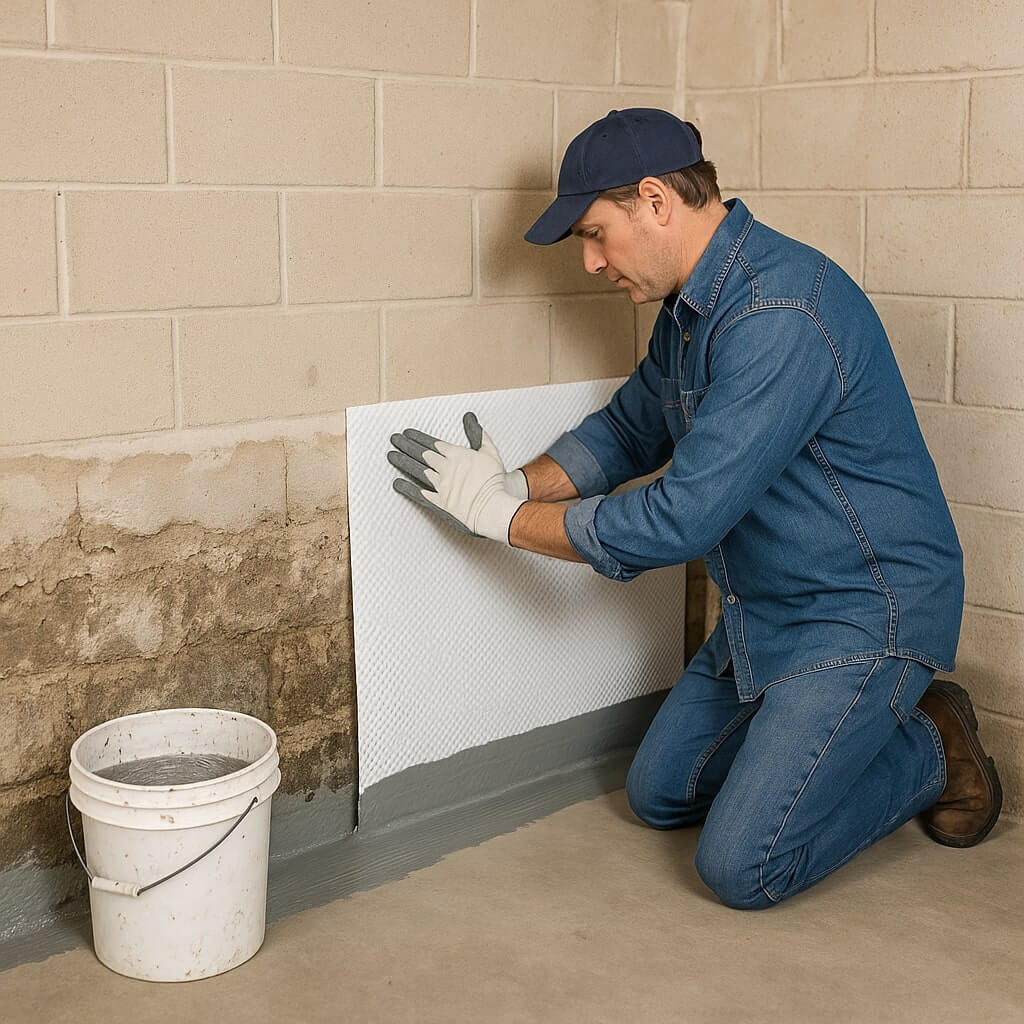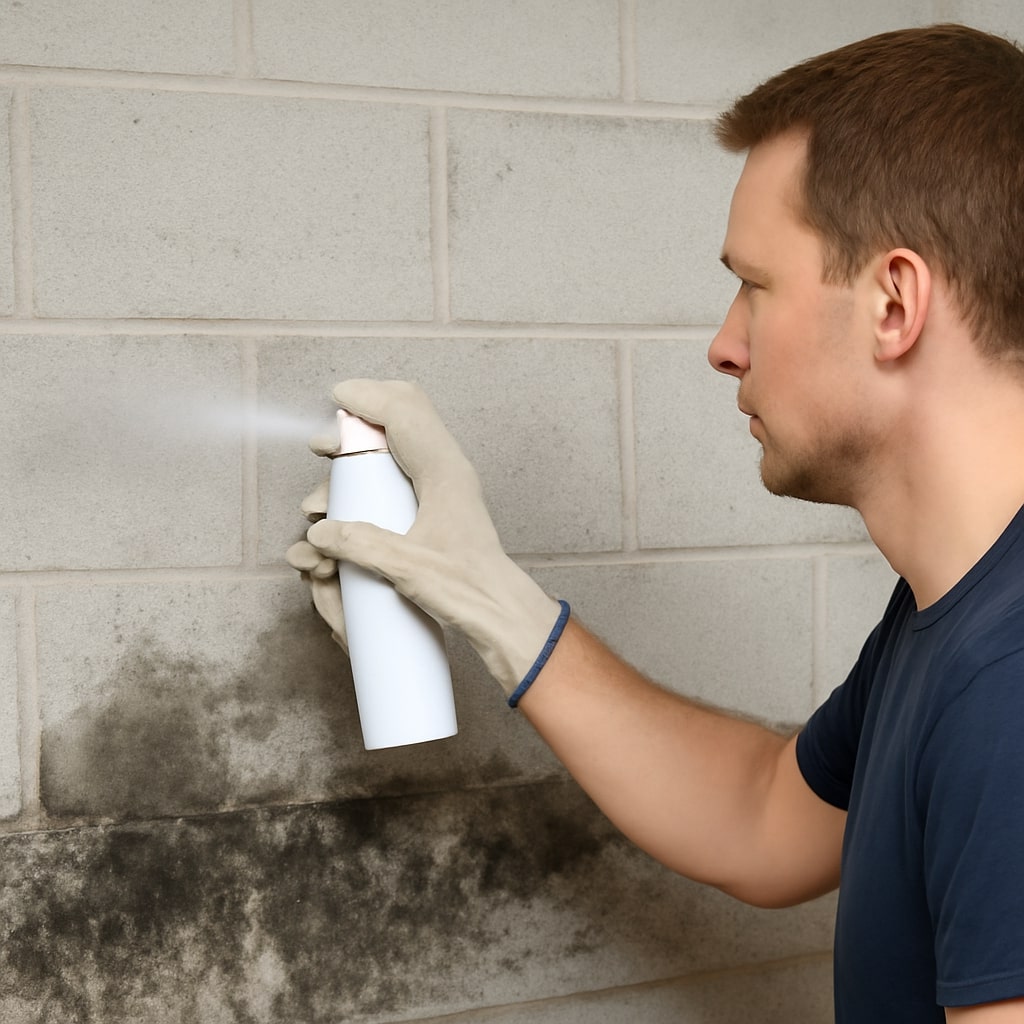When it comes to basement waterproofing, injection methods can be a highly effective solution. You’ll first need to identify the cracks and potential entry points for water. After cleaning the surfaces, preparing your injection equipment is essential for a successful application. Understanding the types of materials you can use will also play a vital role in the effectiveness of the process. Let’s explore the steps involved in this method and its long-term benefits.
Key Takeaways
- Conduct a thorough inspection to identify cracks and water entry points before starting the injection process.
- Clean the surfaces around cracks to ensure proper adhesion of the injection material.
- Choose the appropriate injection material, such as polyurethane foam or epoxy resin, based on the specific waterproofing needs.
- Inject the selected waterproofing material into the identified cracks, ensuring even coverage for maximum effectiveness.
- Allow the material to cure as per manufacturer guidelines and monitor for any signs of moisture or new cracks afterward.
Understanding Injection Methods for Waterproofing
When you’re dealing with basement leaks, understanding injection methods for waterproofing can make a significant difference in protecting your home.
These injection techniques involve introducing specialized materials into cracks and voids to prevent water ingress. By utilizing high-pressure equipment, you can effectively seal off entry points, ensuring water doesn’t compromise your foundation.
The process typically includes identifying leak sources, preparing the surface, and injecting the chosen material into the affected areas.
This proactive approach not only mitigates immediate water issues but also adds long-term durability to your basement, safeguarding your investment against future moisture-related problems.
Types of Injection Materials
Selecting the right injection materials is essential for effective basement waterproofing.
Polyurethane foam is popular due to its ability to expand and fill cracks, forming a watertight seal. It’s lightweight, quick-setting, and adheres well to various substrates.
Polyurethane foam effectively expands to seal cracks, providing a lightweight and quick-setting solution for waterproofing.
On the other hand, epoxy resin offers superior strength and durability, making it ideal for structural repairs. It creates a robust bond and resists chemical exposure, but it may require more time to cure.
Understanding these materials’ properties helps you choose the best option for your specific basement waterproofing needs, ensuring long-lasting protection against water intrusion.
Preparing Your Basement for Injection
Before you begin the injection process, it’s crucial to properly prepare your basement to guarantee ideal results.
Start with a thorough basement inspection to identify any cracks or areas of water intrusion. Document these findings for reference.
Next, focus on surface cleaning; remove dust, dirt, and any debris from the walls and floor to provide a clean surface for the injection material to adhere to.
Pay special attention to the areas around cracks, as they need to be free of contaminants.
This preparation not only enhances the effectiveness of the injection but also extends the longevity of your waterproofing solution.
Step-by-Step Guide to Injection Waterproofing
To successfully execute injection waterproofing, follow these essential steps closely for ideal results.
First, conduct a thorough pre injection assessment to identify cracks and potential water entry points. Clean the surfaces and prepare your injection equipment.
Next, inject the waterproofing material into the identified cracks, guaranteeing even coverage and proper pressure. Allow the material to cure according to manufacturer guidelines.
After the injection, perform post injection maintenance by monitoring the area for any signs of moisture or new cracks. Regularly check the integrity of the waterproofing solution to secure long-lasting protection for your basement against water intrusion.
Benefits of Using Injection Methods
Using injection methods for basement waterproofing provides effective leak sealing that directly targets problem areas, ensuring a long-lasting solution.
You’ll notice minimal disruption during the repair process, allowing you to maintain your property’s integrity without extensive renovations.
This approach not only saves time but also reduces the overall costs associated with more invasive waterproofing methods.
Effective Leak Sealing
When you encounter water leaks in your basement, employing injection methods can be a highly effective solution for sealing those troublesome gaps. These techniques utilize specialized materials that bond with the concrete and expand to fill voids, ensuring a robust barrier against moisture. By prioritizing leak detection, you can address issues promptly, preventing long-term damage.
| Sealing Technique | Benefits |
|---|---|
| Polyurethane Injection | Expands to fill gaps |
| Epoxy Injection | Creates a strong seal |
| Grout Injection | Cost-effective solution |
Utilizing these methods helps maintain a dry, secure basement environment.
Minimal Disruption Repair
Injection methods not only provide effective leak sealing but also offer a minimal disruption repair solution.
By using epoxy resins and polyurethane foams, you can address basement leaks without extensive excavation or demolition. These materials are injected directly into cracks and voids, curing quickly to create a waterproof barrier.
This approach minimizes disruption to your home, allowing you to maintain your living space during repairs. Additionally, the precision of injection techniques reduces the risk of damaging surrounding structures, making it a practical choice for homeowners seeking efficient and less intrusive waterproofing solutions.
You’ll appreciate the convenience and effectiveness of this method.
Maintaining Your Waterproofed Basement
Although you’ve successfully waterproofed your basement, ongoing maintenance is essential to guarantee its continued effectiveness. Regularly inspect the foundation walls and floor for cracks or signs of moisture intrusion.
Ascertain proper drainage around your home to divert water away from the foundation. Implement humidity control measures, such as using dehumidifiers, to maintain an ideal moisture level. This not only aids in mold prevention but also enhances air quality.
Clean gutters and downspouts frequently to prevent blockages. Remember, keeping your basement dry and well-ventilated is key to preserving your waterproofing investment and guaranteeing a healthy living environment.
Conclusion
To summarize, using injection methods for basement waterproofing effectively seals cracks and prevents water intrusion. By choosing the right materials, preparing your space meticulously, and following the outlined steps, you can achieve a durable solution. Don’t forget to monitor the area post-application to catch any new issues early. With proper maintenance and attention, you’ll guarantee your basement remains dry and protected for years to come, safeguarding your home from potential water damage.




